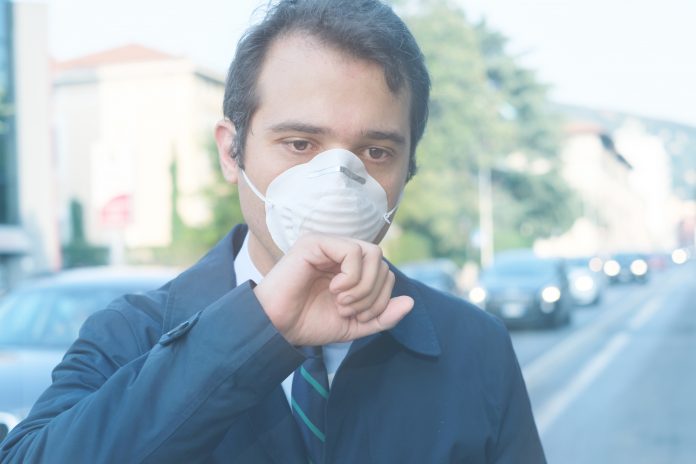Dr. Francisco Inesta-Vaquera, Dr. Colin Henderson, Professor Jonathan Grigg and Professor C. Roland Wolf from the Universities of Dundee and London discuss the complexities of understanding the consequences of air pollution on human health
Environmental pollution is recognised as a major risk for global health and is attributed to 7 million deaths a year. Exposure can be a consequence of industrial activity, the natural environment or urbanisation. Although the European Union (EU) and international agencies are acting to lower human exposure this will remain a major human health issue for many decades1.
Socioeconomic factors together with geographical location are major determinants of individual susceptibility to toxic pollutants and in spite of the overwhelming evidence of their harmful effects, the mechanisms which underlie the diseases which they induce or exacerbate are poorly understood. This can be partially attributed to the complexity of the chemical composition of pollutants which can vary temporally and be different between exposure areas (individual exposome)2 and also, the difficulties in defining toxic mechanism where multiple compounds and particles are involved.
Within the general population, there are groups which are particularly susceptible to chemical/pollutant toxicity and where the consequences of exposure are most profound. Of particular importance but still only studied to a limited extent, are prenatal and postnatal exposure. Exposure of pregnant women to pollution, particularly during the first trimester, is associated with lower infant head size during gestation and at birth, increased intra-uterine growth restriction and low birth weight3. The effects of intra-uterine exposure can extend into adulthood (and potentially trans-generationally) in the form of cancer or an impaired cognitive development4. Studies in experimental models, for example, using carcinogens, have clearly demonstrated that the toxicity and carcinogenicity are much more marked in the neonatal period5,6.
Moreover, children are especially vulnerable to air pollution as they breath more air per unit of body weight and their organs are still developing. A further vulnerable group are individuals with pre-existing medical conditions such as respiratory, cardiovascular conditions or atopic dermatitis7-9. Vulnerable groups would also include individuals with a genetic predisposition to a disease or the deleterious effects of environmental agents10.
There remain numerous challenges in fully understanding the consequences of pollutant exposure. Epidemiological studies have demonstrated the association of both short- and long-term exposure to air pollution with an increase in diseases aforementioned4. However, this is probably only the tip of the iceberg, as chemical components of polluted air are known to induce a wide range of toxic effects on cells, including inflammation (including cells of the immune system e.g., T-cells, macrophages), oxidative stress, DNA damage.11-13. There is an urgent need to increase research efforts to define toxic mechanisms and the specific agents involved.
Because of the complexity of this research, a multidisciplinary approach is needed involving both laboratory and human exposure studies. To assess the toxic potential of environmental pollutants the mechanisms of how these complex mixtures of compounds and particulate matter induce their deleterious effects needs to be established. The human studies to date have predominately relied on the measurement of markers of exposure in surrogate tissues and body fluids (i.e. blood, urine samples)14. Although this work has generated valuable insights into disease aetiology and to some degree mechanism there are many confounders which complicate the interpretation of epidemiological studies. These include variability between individuals, duration, level and composition of exposure and the transient nature of the experimental endpoints being measured. Whereas such measurements may reflect levels of exposure, they do not provide definitive insights into toxic mechanism or indeed identify the target cells. Laboratory studies are needed for this purpose. It should be noted that some of these limitations can be obviated by controlled volunteer studies using exposure chambers but these studies are time-consuming, costly and restricted by ethical considerations.
In vitro studies using specific human cell types e.g. alveolar cells in culture have been valuable in gaining some mechanistic insights into the effects of air pollution15. However, these model systems lack the cellular complexity of the whole organism, for example, the interaction of target cells with the immune system.
Our knowledge of the response of cells to an environmental challenge has increased dramatically. A range of adaptive response systems have been identified which specifically protect cells from the deleterious effects of both endogenously produced and exogenous toxic agents. The activation of these pathways in a cell, therefore, not only reflects potential toxicity but also provides insight into toxic mechanism16. The measurement of these pathways is, therefore, a powerful approach to evaluate the toxic potential of both single and complex mixtures of pollutants. One attraction of using such generic adaptive stress responses as markers of toxicity is that they allow the comparison of the toxic potential of complex pollutant mixtures, for example, between different geographical regions of the world.
Measurement of these pathways in vivo allows the complexities of toxic mechanisms to be studied. Such studies can include different routes of administration and dosimetry. Although the extrapolation of data using animal models to man continues to be debated, most chemicals which are toxic in man are also toxic in animals. Also, at the present time in vivo studies allow the complexities of environmental exposure to be established at a mechanistic level. Data resulting from such investigations can then be validated in human studies.
A number of transgenic lines have been created where oxidative stress, inflammation, DNA damage and AhR interactions can be measured in vivo17-18. This has facilitated ongoing mechanistic studies into the toxicity of diesel particle components. These models are also being used to investigate how environmental pollutants act both neonatally (for example, by trans-lactational transfer) or within the developing embryo.
Understanding how pollutants exert their toxic effects is complex and inevitably will only be resolved through collaborative programmes involving a combination of epidemiological/biomarker and laboratory- based studies. There are a number of key impediments to research progress. In the first instance, although a major health issue and one of public concern and high levels of publicity through the media, the investment in the EU for research in this area relative to other areas of medical research is minimal. Superimposed on this there has also been a general demise in centres of excellence in toxicology in Europe. This is a serious concern not only for environmental research but also in chemical safety assessment and in the development of new drugs.
Key considerations for government
- Remove exposure. This may reduce in Europe in the near future e.g. electrification of transport, exposure free zone, the transition to coal-free power generation but probably not in many other areas of the world in the foreseeable future. 2. Increase the level of investment in defining the deleterious components of the polluted and natural environment and support research into understanding how these agents affect the pathogenesis of human disease and develop risk assessment models. 3. Create centres of excellence specifically dealing with this topic and toxicology in general. 4. Understand the reason for the increased susceptibility in vulnerable groups, for example, socioeconomic status, pre/post-natal exposure and pre-existing medical conditions. 5. A collaboration between basic scientists, medical doctors, exposure experts, epidemiologists and toxicologists is needed to address this extremely important issue.
CRW/CJH/JG are recipients of a research grant from the UK MRC grant no MR/R/009848/1 related to this research area. The authors declare no conflict of interest.
Professor C. Roland Wolf
Professor of Molecular Pharmacology
Dr. Francisco Inesta-Vaquera
Dr. Colin J. Henderson
Systems Medicine, School of Medicine,
University of Dundee
Jacqui Wood Cancer Centre, Ninewells
Hospital, Dundee, UK
Tel: +44 (0)1382 383 133
Professor Jonathan Grigg
Professor of Paediatric Respiratory and Environmental Medicine
Queen Mary University of London
Please note: This is a commercial profile











